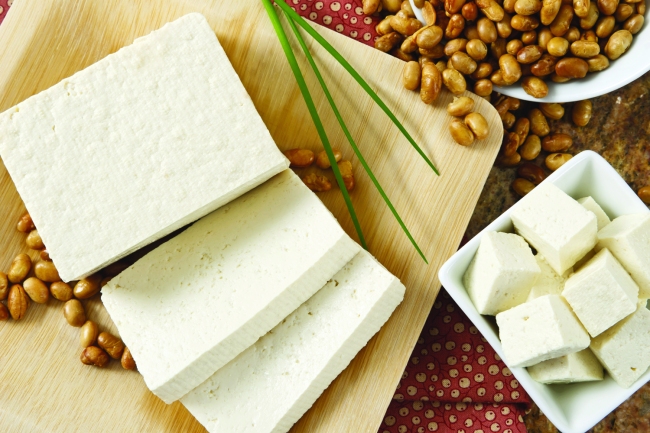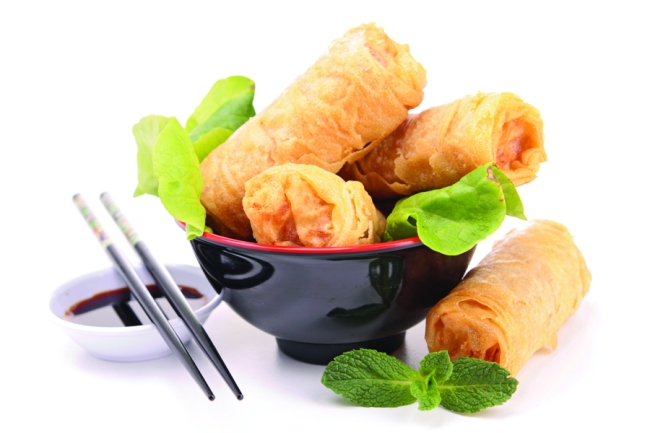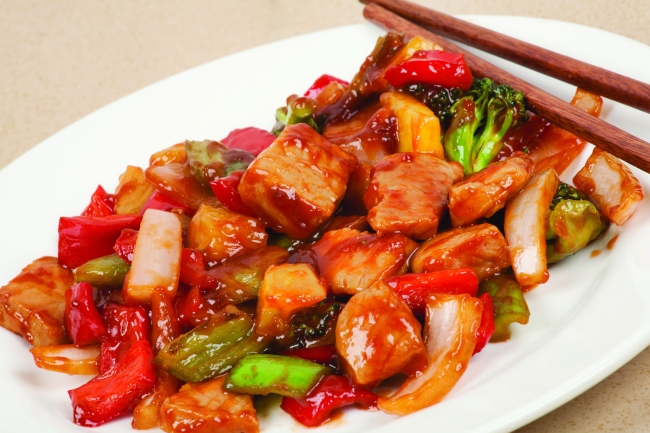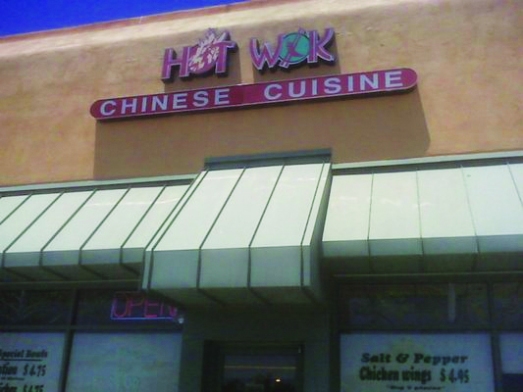Author: Lena Nelson
Special to the Valley News
My daughter’s good with words. “Every great restaurant has a mother and father running it and a cheery son who’s a waiter,” is her epiphany today.
Hon Sun smiles, “Mom’s already told me your order.” Hon Sun’s the “cheery son” of Roger and Lucy, owners of Hot Wok in Murrieta, Calif. He knows that it’s going to be tofu – again. We take our table by the soda machine which nervously starts up as we hit the chairs.
Hon Sun brings the menu nonetheless; we order in unison, “Sweet and Sour Tofu, Vegetable Tofu, and Kung Pao Tofu.”
“And steamed rice,” reminds my daughter.
My husband was born in Taiwan to missionary parents; his first words were “Baba Boo-How” – Chinese for “Daddy’s bad.” He strikes the right chord with Roger, a happy old man with greyish hair and a toothy grin. They discuss Taiwan Sanitarium and Hospital, the biggest hospital in the ‘60s, inauguration of which was attended by Chiang Kai-shek’s wife.
“It’s a small place now;” Roger is embarrassed that the landmark has somehow shrunk.
Some think tofu is not hip. Too scared to try an unsightly ivory-colored block with a texture resembling ricotta cheese, many a Chinese restaurant goer would prefer duck, chicken or beef. But “tofu can take any flavor,” claims Lucy. A tiny lady, Lucy wears a baseball cap that almost manages to sedate an explosion of her black hair. And she delivers – all three of our dishes are remarkably different.
Sweet and Sour Tofu is crispy on the outside yet silken soft on the inside, every bite is thoroughly drenched in flavor. Vegetable Tofu, in longer rectangular strips, is crispy on the outside yet porous and chewy on the inside, stewed with Chinese cabbage, carrots and celery in a vegetarian oyster sauce, a delight to my palate. Kung Pao is spicy and chewy all the way through, made from firmer tofu; it is cooked in Szechwan sauce and has sesame seeds and red pepper bits tagged onto each cube.
Lucy and Roger came to the United States from Taiwan 30 years ago and opened Hot Wok in 1996. Its modest dining hall holds 9 tables. A multitude of cranes head east on a large silk mural; a TV in the corner is tuned to a sports channel. A Yelp review bemoaned one student’s departure for college and inability to take Hot Wok along. I arrived two months ago, agreed with that review, and they’ve had all my Chinese food business so far.
Made from soybeans, tofu or “dofu” as it’s known in China, is over 2000 year old.
“The meat without bones,” a term coined by a 1920s Western chemistry professor, propelled tofu’s popularity in the West. Henry Ford’s support of soybean farming in the 1930s promoted soybean as a food (in the first commercial soymilk, ice cream and nondairy whipped topping) and as an industrial product – 120 pounds of soybeans were used in the production of each Ford car.
“Are we the only ones who order tofu?” I am taken aback by Roger’s delight at my “all tofu” order. “Oh, no, tofu’s popular! Many people order tofu!” When I ask how much tofu they use each week, Lucy holds her arms wide, “A whole big box!”
In the 1970s the health food industry ushered in tofu’s revival. When William Shurtleff and Akiko Ayoagi’s The Book of Tofu came out in 1975, tofu became the “ecologically sound food.” Tofu’s a complete protein, and the FDA maintains that “25 grams of soy protein a day . . . may reduce the risk of heart disease.”
“I’ll make you something special,” says Lucy and rushes off, her rubber shoes shuffling away as her little figure tries to keep up. Pots clang, oil spews and in fifteen minutes she emerges with a complimentary order of cheese wontons.
Lucy and Roger order tofu from a distributor in LA. “Tofu very hard to make, very hard!” declares Lucy “wowing” her r’s; her English, hampered by hours spent behind the stove, is not as fluent as Roger’s who interacts with customers as a waiter.
I’ve tried making tofu – after a tour of the Small Planet tofu plant in Vashon, Wash. several years ago. Purchase ready-made soymilk and your job’s half done (otherwise invest $200 in a soymilk maker). After the soymilk boils, add the coagulant – either1 tsp. nigari (natural magnesium chloride) or 2 tsp. natural calcium sulfate dissolved in one cup of hot water. Less coagulant makes tofu softer; adding more will produce firmer tofu.
When the curds separate from the golden whey fluid, pack them into a container with holes – to allow the remaining whey to drain. Put a 3-5 pound weight on the lid for 20 minutes and the tofu block is ready for a cold-water bath. You can store it in the fridge. Change the water daily. You see, under home conditions it makes too little tofu for the effort. That’s why I go to Hot Wok.
Lucy asks if I know how to cook tofu. I admit that although I have a wok, I’ve concluded that producing the perfectly crisp skin on a cube of tofu isn’t something to be “tried at home.” The only dish my family will consume is scrambled tofu with green peas stewed in soy sauce. No amount of store-bought vegetarian oyster sauce can save me. She smiles knowingly.
“You must have deep fryer! 400 degrees!” The idea of tofu as a healthy alternative goes out the window.
“So I can’t make it crispy at home?”
“It’ll be soft on outside. Even I can’t make it crispy at home. You need deep fryer.”
“What if I buy a deep fryer?” I venture out.
Disappointed that I would consider such a thing over Hot Wok, she sighs, “You can try!”
“It probably won’t be as good as yours!” I comfort her, knowing that my next Chinese meal will be at Hot Wok. And it will be tofu.
Hot Wok is located at 40469 Murrieta Hot Springs Road. For more information, call (951) 696-7570.






